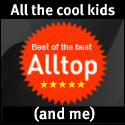This is the second half of our two-part discussion on crowdsourcing with uTest’s VP of Marketing and Community, Matt Johnston. The first installment of our interview is here.
So, you’ve gathered a bunch of information and data from your users. How do you address issues of IP and who owns the content, both from the perspective of your client companies and from your users? How do you protect the rights of both of those groups? Do either of those groups give certain aspects up by using your model that they may not have to otherwise?
That’s a legitimate issue for crowdsourcing companies who are creating something new – for example, in categories like copy writing, design, development and animation. In such instances, companies like Guru, crowdSPRING or GeniusRocket have to think carefully about fairness and address these issues head on and up front. Clear communication (and consistent enforcement) of the rules is vital to maintaining a level playing field in a B2B crowdsourcing model.
In the case of uTest, we don’t have to worry about issues of IP ownership because the customer created the apps and simply wants to test them with our community. The IP issues that are sometimes a concern for new customers are around IP protection.
Again, in this case our job is to establish the ground rules that protect everyone, and then to communicate them clearly and consistently. In the case of uTest, the client created the app and they own it. Testers have no rights to the app or to any of the bugs that they discovered within that app. Beyond that, companies can require testers to sign an NDA and testers are forbidden from sharing any information about customers, their apps, or any bugs outside the uTest platform (including blogs, message boards, Twitter, Facebook, etc.).
You’ve spoken about 90-9-1 Rule, which says that 90% of your community will be passive users, 10% will be active and engaged, and 1% will be the “stars.” Can you shed some light on these numbers and how each group can add value to the process?
We had a great discussion about this at the recent TiE event! The 90-9-1 rule states that 90% of community members will be “lurkers,” 9% will be part-time contributors and 1% will fully adopt and become “super users.” While the math changes from crowd to crowd, the underlying premise does not: the vast majority of the contribution or participation will come from your top users. This isn’t just true in crowdsourcing, it’s true on message boards, social networks, blogging services, and most online user bases.
If you’re building an ad-based revenue model, you may not care, because even “lurkers” generate page views. However, if you’re building a transaction-oriented revenue model like uTest is, you need participation in order for a community member to make a direct contribution.
Thus, one of uTest’s keys to success is to identify those future “stars” early on so we can nurture them along the path to success. We recognize that some testers join our community because they want to use their testing skills to earn money, while others join because they want to network with their peers and consume the educational content that we provide. We welcome all testers into our community, but we make a special effort to engage those who want to participate in projects.
We talk a lot about “inside-the-transaction” vs. “outside-the-transaction” types of participation. The former refers to testers who are participating in projects, reporting bugs and getting paid (as well as building their reputation). The latter refers to those who don’t participate in projects, but could still make meaningful contributions. This could be by subscribing to our newsletter, commenting on our blog, participating in our forums, or contributing content, ideas and expertise to other members of our community. Both types of participation are valuable to uTest’s long-term future, but the wants and needs of these two groups are unique, so we cater to them as such.
Your company didn’t just come to the decision to implement crowdsourcing one day, you actually built the entire company on that model specifically. It’s in the name - uTest. Do you feel you could have gotten similar results had you been offering the same end-products through more traditional methods of production/testing? Would they have been worse? Could things be better using a different model?
If we tried to do this with a traditional model, the results wouldn’t even be close to what we’ve achieved to date. It would be impossible from a logistics or financial perspective for us to have built the level of testing coverage that we have today. We’re doing testing for some of the top software companies in the world in our first year of operations – no small feat. And we couldn’t do it without our community and our investment in our community.
The testing needs in the world of software have become exceedingly complex. Companies now have to test their apps across locations, languages, operating system, browser, as well as handset makers and models, and wireless carriers. This is a prohibitively expensive task for even the most mature and sophisticated companies. And crowdsourcing is uniquely suited to meet the challenges of software testing. That underlying belief is what prompted our co-founders to build uTest based on a crowdsourcing model – and what led me to join the company.
About uTest
uTest is the world’s largest marketplace for software testing services. The company provides real-world testing services through its community of 20,000+ professional testers from 158 countries around the world. Hundreds of companies - from web startups to global software leaders - have joined the uTest marketplace to get their web, desktop and mobile applications tested. More information can be found at http://www.utest.com or the company’s Software Testing Blog at http://blog.utest.com.
 minimum level of contribution and value-add that’s required before you can say that something has been “sourced” (whether it be in-sourced, outsourced or crowdsourced). I’m not trying to define what this minimum criteria is, but I know that there’s a line.
minimum level of contribution and value-add that’s required before you can say that something has been “sourced” (whether it be in-sourced, outsourced or crowdsourced). I’m not trying to define what this minimum criteria is, but I know that there’s a line.


